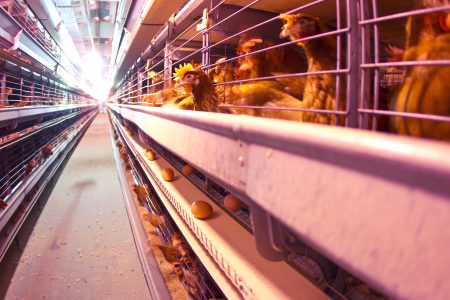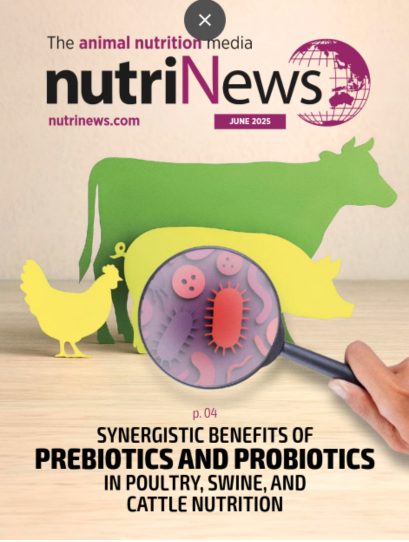Laying hens’ nutrition has critical points that require a great deal of attention in order to obtain the best possible yields from these productive systems. Current laying hens have very high genetic potential for egg production. They can maintain yields of over 90% of posture for a great part of their production cycle if given adequate environmental, health and nutritional conditions.

Genetic advances in the last decade have given way to laying hens that possess extraordinary and sustained productive capacity. Paired with a slight reduction in body weight, feed consumption and egg size. Having the ability to reach 50% production earlier than 10 years ago.
Modern hens, a challenge for nutritionists
Modern hens represent a challenge for nutritionists, as one can no longer rely entirely on scientific information generated in the past based on different types of birds.
![]() One could anticipate the need of an increase in nutritional requirements; however, these hens still produce one egg a day, with a slightly reduced daily egg mass. Therefore, daily nutritional requirements should not have increased following this train of thought. Hence, it is very important to consider the hen’s nutritional requirements during the laying phase based on a daily consumption of nutrients.
One could anticipate the need of an increase in nutritional requirements; however, these hens still produce one egg a day, with a slightly reduced daily egg mass. Therefore, daily nutritional requirements should not have increased following this train of thought. Hence, it is very important to consider the hen’s nutritional requirements during the laying phase based on a daily consumption of nutrients.
The importance of achieving weight in rearing
| One of the main problems in birds that are reaching their production peak and are not able to consume enough food, is that they end up having to resort to their body fat and bone structure to compensate for this lack of nutrients. Resulting in a production decrease that will impact the performance of the bird during the rest of its productive lifespan if its reserves are not adequate and / or the demand is high. |
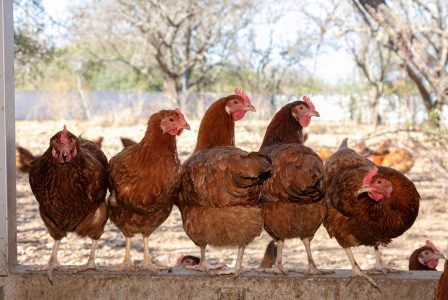
Therefore, it is necessary to prepare layers so they can begin posture with appropriate size and weight,
![]() A feed intake of at least 95 g and ideally 100 g daily, with an appropriate calcium reserve is recommended. This will contribute to a well-formed medullary bone.
A feed intake of at least 95 g and ideally 100 g daily, with an appropriate calcium reserve is recommended. This will contribute to a well-formed medullary bone.
To interrelate the parameters mentioned above, it is necessary that rearing diets stimulate the increase in the size of the digestive tract. Increasing fiber levels and using feeds with 1.0 to 1.2 mm granulometry from the fifth week of age.
![]() It is advisable to use 3.5% fiber levels from weeks 5 – 11. Moving up to 3.5 to 4.5% from weeks 12 to 18.
It is advisable to use 3.5% fiber levels from weeks 5 – 11. Moving up to 3.5 to 4.5% from weeks 12 to 18.
![]() Breeding and rearing diets for chicks (0 – 4 and 5 – 11 weeks of age) should be formulated with no less than 18 and 16% protein respectively, with the inclusion of their corresponding amino acids to ensure optimal growth.
Breeding and rearing diets for chicks (0 – 4 and 5 – 11 weeks of age) should be formulated with no less than 18 and 16% protein respectively, with the inclusion of their corresponding amino acids to ensure optimal growth.
![]() Metabolizable energy levels should not drop below 2750 kcal/kg after 12 weeks.
Metabolizable energy levels should not drop below 2750 kcal/kg after 12 weeks.
Bone formation
For appropriate bone formation, the inclusion of calcium, phosphorus and vitamin D3 during growth is crucial. Maintaining a proper ratio between available calcium, and phosphorus, as well as providing adequate levels of these minerals during the pre-posture phase for a correct medullary bone formation.
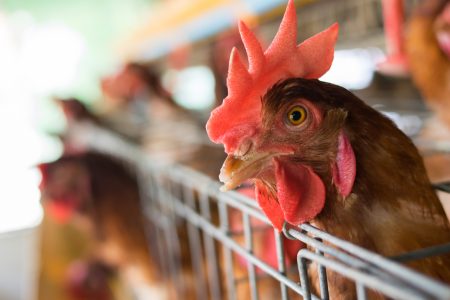
Medullary bone formation begins around 10 days before posture. The bird’s skeleton increases by 20% due to a hormonal synergism of estrogens and androgens which indirectly increase the absorption and retention of calcium and phosphorus.
![]() This process is externally evidenced with the growth and coloration of the crest and chins. Completing itself at around 30 weeks of age.
This process is externally evidenced with the growth and coloration of the crest and chins. Completing itself at around 30 weeks of age.
![]() During posture, the formation of medullary bone takes place between each ovulation and it exclusively depends on the action of estrogens.
During posture, the formation of medullary bone takes place between each ovulation and it exclusively depends on the action of estrogens.
![]() Calcium derived from this bone (about 1 g) is always available for shell formation.
Calcium derived from this bone (about 1 g) is always available for shell formation.
![]() For this process to work, it necessary to include the correct amount and appropriate kind of nutrients within the diet at the right time. Otherwise, the medullary reserve will be maintained at the expense of structural bone, resulting in leg weakness and cage fatigue.
For this process to work, it necessary to include the correct amount and appropriate kind of nutrients within the diet at the right time. Otherwise, the medullary reserve will be maintained at the expense of structural bone, resulting in leg weakness and cage fatigue.

Egg formation scheme
Calcium
![]()
Particle size of the calcium source is one of the most important parameters for maintaining good shell quality.
![]() Particles larger than 2 mm are retained in the gizzard, slowly solubilizing and thus delaying the assimilation of calcium.
Particles larger than 2 mm are retained in the gizzard, slowly solubilizing and thus delaying the assimilation of calcium.
![]() This dietary calcium will be available overnight, which is when the greatest calcification of the shell occurs and the hen will not have to rely exclusively on calcium from medullary bone.
This dietary calcium will be available overnight, which is when the greatest calcification of the shell occurs and the hen will not have to rely exclusively on calcium from medullary bone.
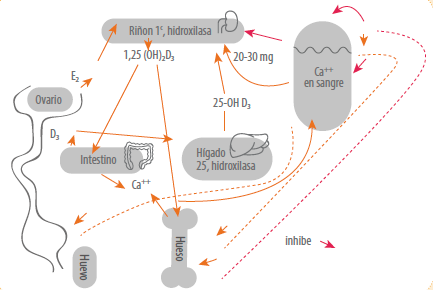
Figure 1. Calcium homeostasis (modified from Soares 1984))
Phosphorus levels

The dietary level of phosphorus available is also important in the quality of the shell. During the growth of the bird an appropriate level and ratio of available calcium and phosphorus are necessary for optimal bone calcification and bone formation.
![]() However, during posture, a relatively high level of available phosphorus inhibits calcium mobilization from the bones.
However, during posture, a relatively high level of available phosphorus inhibits calcium mobilization from the bones.
![]() Because, although there is availability of dietary calcium during the night, the hen will always resort to medullary bone to obtain part of the calcium that goes into the shell. The mobilization of calcium from the bone implies the presence of a high phosphorus level in the blood.
Because, although there is availability of dietary calcium during the night, the hen will always resort to medullary bone to obtain part of the calcium that goes into the shell. The mobilization of calcium from the bone implies the presence of a high phosphorus level in the blood.
Therefore, it is necessary to limit the phosphorus level available in the diet, especially after 60 weeks of age in order to improve shell quality.
Vitamin D3
![]()
The presence of adequate vitamin D3 levels in the diet is essential for a good calcification of the bones and shell.
Vitamin D3 metabolites are currently available for their use. Contributing to increase calcium retention and oftenly helping to reduce mortality.
Zinc, manganese and copper

It is important that the diet also contains adequate levels of zinc, manganese and copper. These minerals participate in the formation of membranes or internal cuticules of the eggshell. As well as contributing to the formation of the shell’s organic matrix.
![]() Zinc contributes to carbonate availability for the formation of the shell’s calcium carbonate. The addition of these minerals from a good organic source has proved to be very beneficial.
Zinc contributes to carbonate availability for the formation of the shell’s calcium carbonate. The addition of these minerals from a good organic source has proved to be very beneficial.
Caloric stress and shell quality
When hens are under caloric stress, continuous panting generates a drop in carbonate levels within the blood. Leading to subsequent deterioration of shell quality due to lack of carbonate.
![]() In order mitigate such scenario, the inclusion of baking soda replacing salt in the ration up to a 0.3% maximum can really help.
In order mitigate such scenario, the inclusion of baking soda replacing salt in the ration up to a 0.3% maximum can really help.
![]() In addition, vitamin C can be added to the diet, favoring the conversion of 25(OH) D3 to 1,25(OH)2 D3.
In addition, vitamin C can be added to the diet, favoring the conversion of 25(OH) D3 to 1,25(OH)2 D3.
![]() Food and water intake can also be increased with 1 additional hour of nightlight.
Food and water intake can also be increased with 1 additional hour of nightlight.
Selection of feed by the hens
Hens in posture require a minimum daily intake of metabolizable energy of 280 to 300 kcal/kg with a balanced intake of digestible amino acids, mineral, and vitamins to ensure adequate egg production and size.
When the hen is in production, it has the ability to select different components of the diet during the day.
![]() This is a very efficient process. It is recommended that for the way in which feed is presented, the grain and the source of calcium must have a particle size ranging from 3 and 5 mm to stimulate their selection.
This is a very efficient process. It is recommended that for the way in which feed is presented, the grain and the source of calcium must have a particle size ranging from 3 and 5 mm to stimulate their selection.
![]() It is advisable to use at least 2% additional oil or other ingredients with high lipid content, such as whole grain soybeans, in order to reduce dust and help the bird select the finest portion of the feed.
It is advisable to use at least 2% additional oil or other ingredients with high lipid content, such as whole grain soybeans, in order to reduce dust and help the bird select the finest portion of the feed.
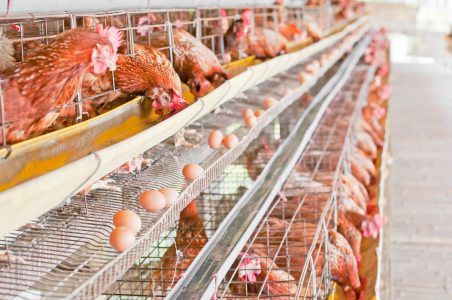
Traditionally, protein levels equal to or greater than 17% have been used in laying hens’ diets . However, the current trend is to formulate based on the requirements of indispensable digestible amino acids.
![]() Excess protein levels within the ration not only mean a high additional cost of the formula, but can also affect the productive performance of layers. This is especially true when hens are under caloric stress conditions.
Excess protein levels within the ration not only mean a high additional cost of the formula, but can also affect the productive performance of layers. This is especially true when hens are under caloric stress conditions.
![]() Protein digestion and metabolism generate an unnecessary body caloric increase, increase circulating amino acids, which in turn decreases appetite. These factors cause uric acid excretion in excess amounts with great energy expenditure which will ultimately increase environmental pollution.
Protein digestion and metabolism generate an unnecessary body caloric increase, increase circulating amino acids, which in turn decreases appetite. These factors cause uric acid excretion in excess amounts with great energy expenditure which will ultimately increase environmental pollution.
|
It is important to mention that laying hens do not have a crude protein requirement as such. They only need an amount that ensures a sufficient nitrogen reserve for the synthesis of dispensable amino acids. |
During the last decade, a considerable number of studies have been carried out to determine the daily amino acid needs in laying hens. Therefore, formulating based on the requirements of indispensable digestible amino acids is a proven practice. Layers fed a diet of 13 to 14% protein, adequately supplemented with pure amino acids (methionine, lysine, tryptophan, arginine, threonine, valine and isoleucine) have been shown to perform optimally, similar to those fed a control diet containing 16% or 18% protein.
It is essential to have accurate and reliable values of digestible amino acids within the ingredients in order to achieve this type of results.
The amount of information that has been generated regarding the digestibility of amino acids in raw materials and their required levels, allows a more precise formulation of laying hen diets. Table 1 shows the updated range of suggested daily intake levels of digestible amino acids for laying hens.
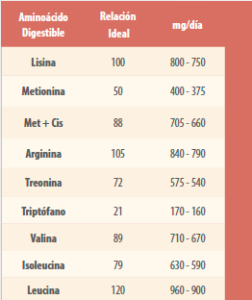
Table 1. Suggested ratio of digestible amino acids for laying hens.
CONCLUSION
Adapting nutritional programs to the requirements of new genetic strains of laying hens is a great challenge. Due to the fact that they are very efficient birds with great egg production capacity which also makes them more sensitive to any nutritional alteration. In any case, the development of these new nutritional programs should always consider the most favorable measures which contribute to obtain the best financial returns for the producer.
